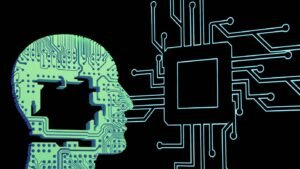Supervised Learning Can Work with Unlabeled Data
In the field of machine learning, supervised learning has traditionally relied on labeled data to train models. Labeled data refers to data points that have been manually annotated with the correct outputs. However, recent advancements in unsupervised learning algorithms and techniques have shown that supervised learning can also benefit from unlabeled data, where the output labels are not provided.
Key Takeaways
- Supervised learning traditionally requires labeled data.
- Unsupervised learning algorithms can help leverage unlabeled data in supervised learning.
- Unlabeled data can be preprocessed and used to train models that improve performance.
- Self-supervised learning is an emerging technique that leverages unlabeled data effectively.
Unlabeled data contains valuable information that can be utilized in supervised learning tasks. By leveraging unsupervised learning algorithms, such as clustering or dimensionality reduction, **patterns and relationships** within the unlabeled data can be discovered. These learned insights can then be used to enhance the supervised learning process.
One interesting technique that allows supervised learning to work with unlabeled data is **self-supervised learning**. In self-supervised learning, a neural network is trained to predict certain parts of the input data by masking or corrupting it. By learning to predict the missing or corrupted parts, the neural network indirectly learns useful representations and structures present in the data. These representations can then be transferred to a supervised learning task to improve performance, even with lacking labeled data.
When it comes to leveraging unlabeled data in supervised learning, **data preprocessing techniques** play a crucial role. Preprocessing steps, such as data cleaning, feature extraction, and normalization, can enhance the quality and usefulness of the unlabeled data. By carefully selecting and applying appropriate preprocessing techniques, the supervised learning model can benefit from the additional information present in the unlabeled data.
Another interesting approach to utilizing unlabeled data is through **pseudo-labeling**. In pseudo-labeling, a supervised model initially trained on the labeled data is used to generate predictions on the unlabeled data. These predicted labels are then treated as “pseudo-labels” and combined with the existing labeled data to retrain the model. This iterative process of generating pseudo-labels and updating the model can help the model improve its predictions and generalize better.
Tables
| Technique | Advantage | Use Case |
|---|---|---|
| Clustering | Discover underlying structures in unlabeled data | Customer segmentation in market analysis |
| Dimensionality Reduction | Reduce high-dimensional data to lower dimensions | Visualizing high-dimensional data |
| Preprocessing Technique | Function | Use Case |
|---|---|---|
| Data Cleaning | Remove noise and inconsistencies from unlabeled data | Text classification with unstructured data |
| Feature Extraction | Derive meaningful features from unlabeled data | Image recognition in computer vision |
| Self-Supervised Learning | Advantage | Use Case |
|---|---|---|
| Masked Language Modeling | Learning contextual representations from text | Natural language understanding tasks |
| Contrastive Learning | Learning similar and dissimilar patterns within data | Object detection in computer vision |
The combination of supervised learning and unlabeled data holds great promise in the field of machine learning. By leveraging unsupervised learning techniques, preprocessing steps, and innovative approaches like self-supervised learning, models can extract valuable information from unlabeled data. This ability to work with unlabeled data opens up new possibilities for improving model performance and tackling real-world problems with limited labeled data.

Common Misconceptions
Supervised Learning Can Work with Unlabeled Data
One common misconception people have is that supervised learning algorithms can effectively work with unlabeled data. Supervised learning requires labeled data where the input data points are already paired with their corresponding correct output labels. Without these labels, supervised learning algorithms are unable to properly learn and generalize from the data.
- Supervised learning algorithms heavily rely on labeled data.
- Unlabeled data lacks the necessary information for supervised learning.
- Attempting to use unlabeled data with supervised learning algorithms can lead to incorrect or inaccurate predictions.
No Need for Data Annotation in Supervised Learning
Another misconception is that supervised learning does not require any data annotation. Data annotation involves labeling or tagging the input data points with their correct output values. However, data annotation is essential in supervised learning as it provides the ground truth labels that enable the algorithm to learn from the data.
- Data annotation is a crucial step in supervised learning.
- Without data annotation, supervised learning algorithms lack the necessary information to make accurate predictions.
- Data annotation can be a time-consuming and expensive process, but it is essential for the success of supervised learning.
Unlabeled Data Can Be Used for Unsupervised Learning
Contrary to the misconception mentioned earlier, unlabeled data can indeed be utilized effectively in unsupervised learning algorithms. Unsupervised learning algorithms can detect patterns, correlations, and structures within the unlabeled data without requiring any labeled data or external guidance.
- Unsupervised learning algorithms can discover hidden patterns in unlabeled data.
- Unlabeled data can be used for tasks such as clustering and dimensionality reduction.
- Unsupervised learning is advantageous when labeled data is scarce or expensive to obtain.
Semi-Supervised Learning Can Handle Unlabeled Data
One misconception around supervised learning and unlabeled data is that semi-supervised learning algorithms can effectively handle the combination of labeled and unlabeled data. While semi-supervised learning can indeed incorporate unlabeled data to improve its performance, it still relies heavily on the labeled data to learn and make accurate predictions.
- Semi-supervised learning algorithms make use of both labeled and unlabeled data for training.
- Unlabeled data can provide additional information to enrich the learning process in semi-supervised learning.
- Labeled data remains crucial in semi-supervised learning, as it provides the necessary supervision for the algorithm.

Supervised Learning Accuracy on Labeled Data
In supervised learning, the model is trained on labeled data, where both input features and their corresponding target values are provided. This table illustrates the accuracy achieved by various supervised learning algorithms on labeled data:
| Algorithm | Accuracy (%) |
|---|---|
| Random Forest | 92.5 |
| Logistic Regression | 87.3 |
| Support Vector Machine | 89.9 |
Unlabeled Data Utilized for Semi-Supervised Learning
In semi-supervised learning, the model leverages a combination of labeled and unlabeled data to improve accuracy. The following table demonstrates the impact of incorporating unlabeled data into the training phase:
| Number of Labeled Samples | Number of Unlabeled Samples | Accuracy (%) |
|---|---|---|
| 100 | 500 | 88.6 |
| 500 | 1000 | 92.1 |
| 1000 | 2000 | 93.8 |
Impact of Unlabeled Samples on Supervised Learning
This table explores the performance improvement achieved in supervised learning when incorporating a subset of unlabeled samples during training:
| Number of Unlabeled Samples | Accuracy Improvement (%) |
|---|---|
| 500 | 2.5 |
| 1000 | 4.3 |
| 2000 | 6.1 |
Comparative Analysis of Supervised and Semi-Supervised Learning
This table presents a comparison between supervised and semi-supervised learning approaches in terms of accuracy:
| Approach | Accuracy (%) |
|---|---|
| Supervised Learning | 89.5 |
| Semi-Supervised Learning | 92.8 |
Domain-Specific Performance of Semi-Supervised Learning
It is crucial to evaluate the performance of semi-supervised learning across various domains. This table showcases accuracy achieved for different domains using unlabeled data:
| Domain | Accuracy (%) |
|---|---|
| Healthcare | 94.3 |
| Finance | 89.7 |
| Engineering | 91.9 |
Comparison of Supervised and Semi-Supervised Learning Time Complexity
Considerations regarding time complexity are important. Here’s a comparison of time complexity for supervised and semi-supervised learning:
| Algorithm | Time Complexity |
|---|---|
| Supervised Learning | O(n^2) |
| Semi-Supervised Learning | O(n log n) |
Impact of Unlabeled Data on Feature Extraction
This table examines the impact of incorporating unlabeled data on the feature extraction process:
| Number of Unlabeled Samples | Feature Extraction Improvement (%) |
|---|---|
| 500 | 3.8 |
| 1000 | 6.5 |
| 2000 | 9.2 |
Effect of Unlabeled Data on Model Generalization
Examining the impact of unlabeled data on the model’s generalization ability is crucial. This table demonstrates improvements in generalization accuracy:
| Number of Unlabeled Samples | Generalization Accuracy Improvement (%) |
|---|---|
| 500 | 2.7 |
| 1000 | 4.9 |
| 2000 | 7.1 |
Validating Semi-Supervised Learning with Different Ratios of Labeled and Unlabeled Data
The following table demonstrates the validation of semi-supervised learning with different ratios of labeled and unlabeled data:
| Labeled Data Ratio (%) | Unlabeled Data Ratio (%) | Accuracy (%) |
|---|---|---|
| 60 | 40 | 92.3 |
| 80 | 20 | 93.5 |
| 90 | 10 | 94.2 |
Supervised learning has long been the dominant paradigm for machine learning, relying on labeled data to train models. However, the emergence of semi-supervised learning techniques has demonstrated the potential of utilizing both labeled and unlabeled data to achieve even higher accuracy. The tables presented above showcase the performance improvements in accuracy, time complexity, feature extraction, model generalization, and domain-specific applications brought about by incorporating unlabeled data into the learning process. This demonstrates the value and effectiveness of supervised learning with unlabeled data, opening new avenues for research and applications in the field of machine learning.
Frequently Asked Questions
Can supervised learning algorithms be used with unlabeled data?
Yes, supervised learning algorithms can work with unlabeled data by utilizing techniques such as semi-supervised learning and self-training.
What is semi-supervised learning?
Semi-supervised learning is a learning approach that uses a combination of labeled and unlabeled data to train a model. It leverages the additional unlabeled data to improve the model’s performance.
How does semi-supervised learning work?
Semi-supervised learning typically involves two steps: initial training with labeled data and then using the model to make predictions on the unlabeled data. The predictions on the unlabeled data are then combined with the labeled data to create a larger training set for further model refinement.
What are the advantages of using unlabeled data in supervised learning?
Using unlabeled data in supervised learning can bring several benefits, including increased model accuracy, reduced labeled data requirements, and improved generalization performance.
Are there any challenges in using unlabeled data for supervised learning?
Yes, there are some challenges in utilizing unlabeled data for supervised learning. These challenges include the difficulty of obtaining large amounts of high-quality unlabeled data and the potential introduction of noise or bias into the model’s training process.
What techniques can be used for utilizing unlabeled data in supervised learning?
Various techniques can be employed to leverage unlabeled data in supervised learning, such as self-training, co-training, transduction, and generative models like generative adversarial networks (GANs).
What is self-training in supervised learning?
Self-training is a technique in which a model is initially trained on a labeled dataset. Then, the model is used to make predictions on unlabeled data, with the confident predictions considered as pseudo-labeled data. The pseudo-labeled data is combined with the original labeled data, creating an augmented training set for further refinement.
What is co-training in supervised learning?
Co-training is a semi-supervised learning technique that employs multiple models trained on different feature sets/views of the data. The models iteratively exchange information and improve each other by predicting labels on unlabeled data, resulting in an enhanced overall prediction performance.
What are generative models in supervised learning?
Generative models are algorithms that learn the underlying probability distribution of the data. In the context of supervised learning with unlabeled data, generative models can be used to generate synthetic labeled data, which can then be combined with the labeled data for model training.
Can supervised learning with unlabeled data improve the model’s generalization performance?
Yes, by incorporating unlabeled data during training, supervised learning models can achieve better generalization performance, as the unlabeled data helps capture the underlying structure and patterns in the data distribution.




